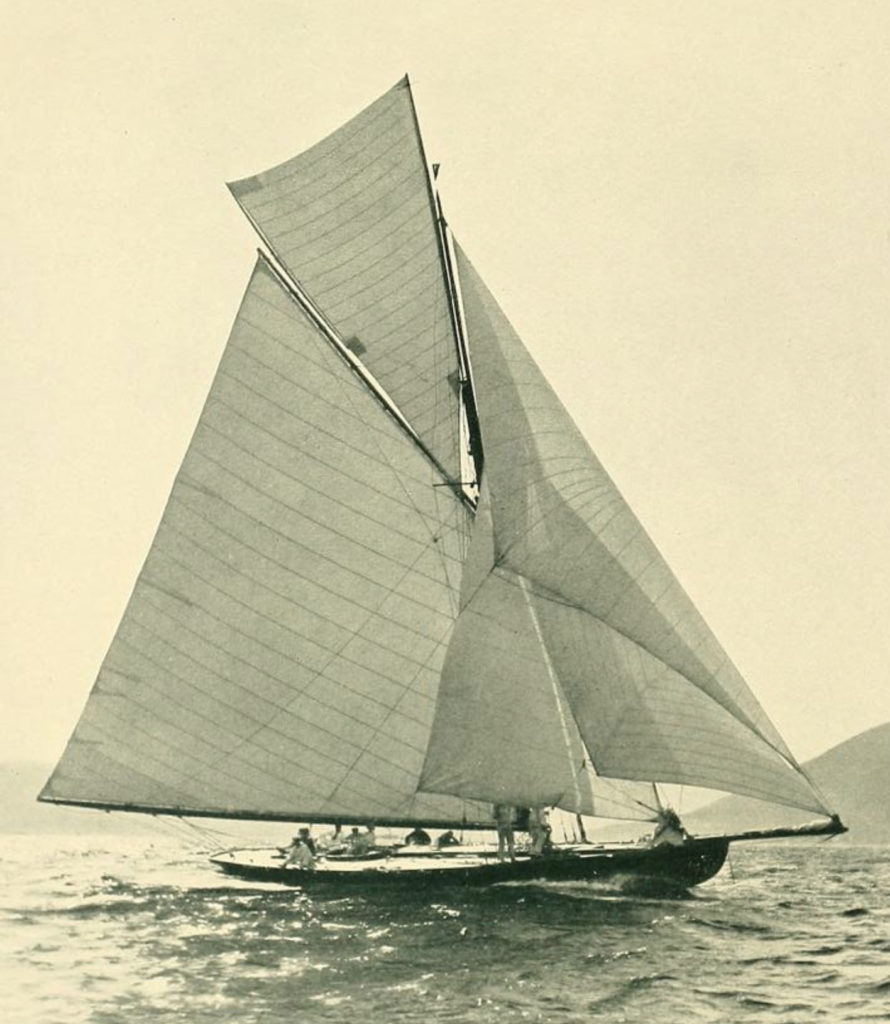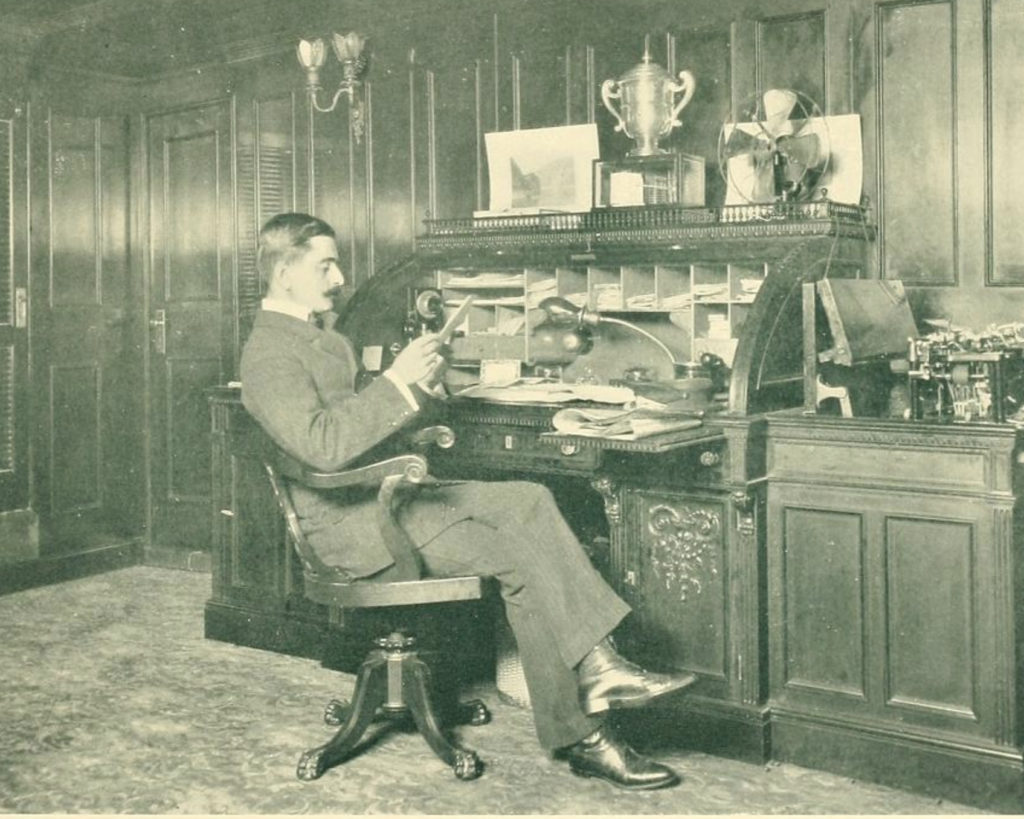April 13, 2020
This Week in Herreshoff History: April 16
The largest fin keelers HMCo. ever built, enormous wealth and enormous yachts, and a sad performance abroad
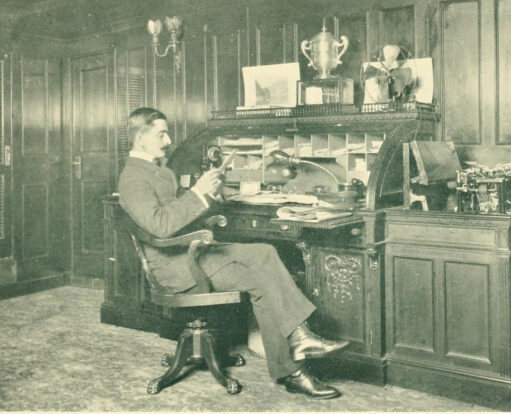
April 15, 1893
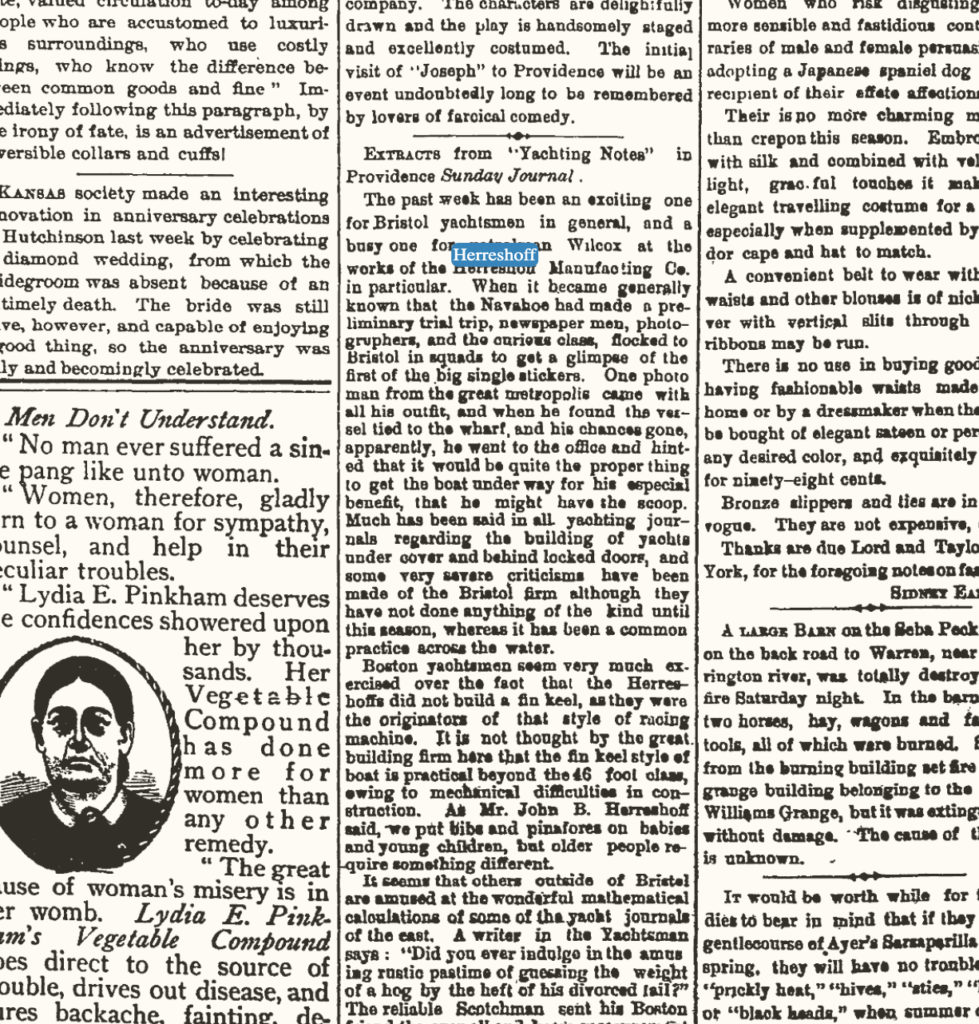
The Bristol Phoenix reprints extracts from the Providence Sunday Journal's "Yachting Notes" column, noting the preliminary trip of the 123' (LOA) cutter NAVAHOE, HMCo. #429. When asked why HMCo. did not build NAVAHOE as a fin-keeler (a design “originated” at HMCo.), John Herreshoff says the design is not practical beyond a 46 foot waterline. As he explains: “We put bibs and pinafores on babies and young children, but older people require something different...” Captain Nat later described NAVAHOE's bad luck on the international yachting scene, and his words were published as follows in the book Recollections: "In the fall of this year (1892), we received an order from Royal Phelps Carroll for a forty-five foot [sic, read: eighty-four] waterline sloop [in] which he proposed to cruise in European waters, and incidentally, have a little racing while in England. Like all American yachts of any note, she had a centerboard and this was a steel plate nearly one and a half inches thick and enormously heavy to manipulate. She was a good seaworthy craft, but the British, hearing a big one sticker was coming over to race them, built three craft to meet her. All these were of the low ballasted type and outclassed her as a racing craft from the conception; thus NAVAHOE was beaten in nearly all her races in English waters..."

April 16, 1895
Continuing on the topic of fin-keelers, the twenty-rater NIAGARA (HMCo. #451) was launched two years and a day after JBH's comments to the Providence Journal were reprinted in the Phoenix. NIAGARA was the largest of the fin keelers HMCo. ever built at 45' on the waterline and 65' length overall. She was built for Howard Gould (1871 - 1959), son of infamous financier, American Yacht Club founding member and steam yacht racing aficionado, Jay Gould. Howard later had a steam yacht also named NIAGARA, built by Harlan and Hollingsworth Co. of Wilmington, DE and launched in 1898.
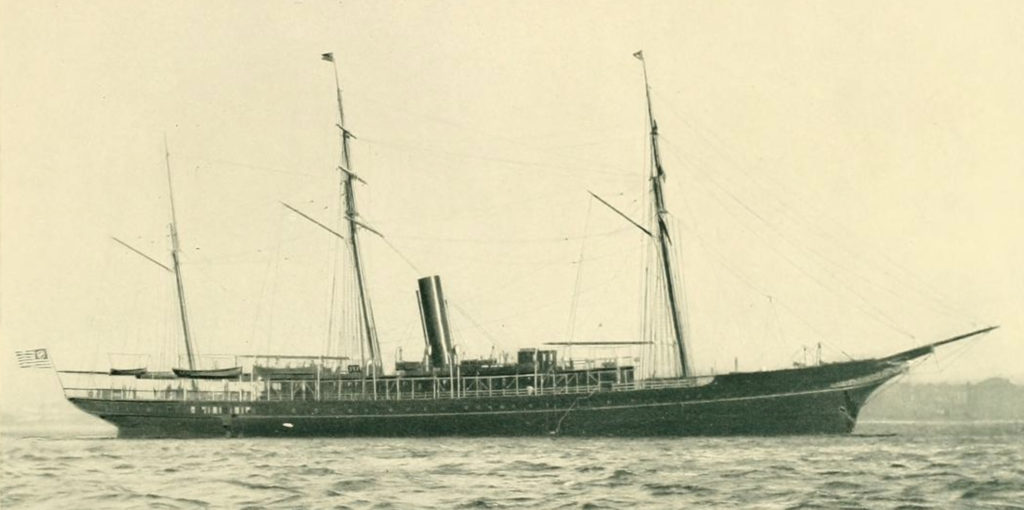
Gould took the twenty rater to England to race in 1895. She was outfitted with what would become Herreshoff's signature cross-cut sails, which caused a stir in the UK. As the New York Times described in February (while the vessel was still under construction), "... The Gould twenty-rater is planked with 3/8-inch pine on the inside, and 7-16-inch mahogany on the outside. A coat of white paint mixed with burnt sienna, just thick enough to work, is put on between the two layers of plankings. ... Hathaway [HMCo.'s sailmaker], who formerly worked for Gifford of Fall River, is making the sails for the small boats in a small room over the joiner shop. The seams are diagonal, à la the patent of Ratsey of Cowes. As the latter has a patent on sails made in this way, there may be some bother about Howard Gould's new twenty-rater [#451s Niagara] being allowed to wear them on the other side. Ratsey is a stickler for anything he gets up."
NIAGARA was criticized by the press as both ugly and unsporting, with only 5'2" of headroom below making her fit for nothing but racing. That said, race she did, and she was very successful on the yachting circuit in the U.K. that first summer, winning 29 first place finishes out of 50 races. She returned the following year and performed slightly worse - only 20 first place finishes out of 40 races. Gould sold her in 1901, and she remained in England until she was broken up in 1960.
